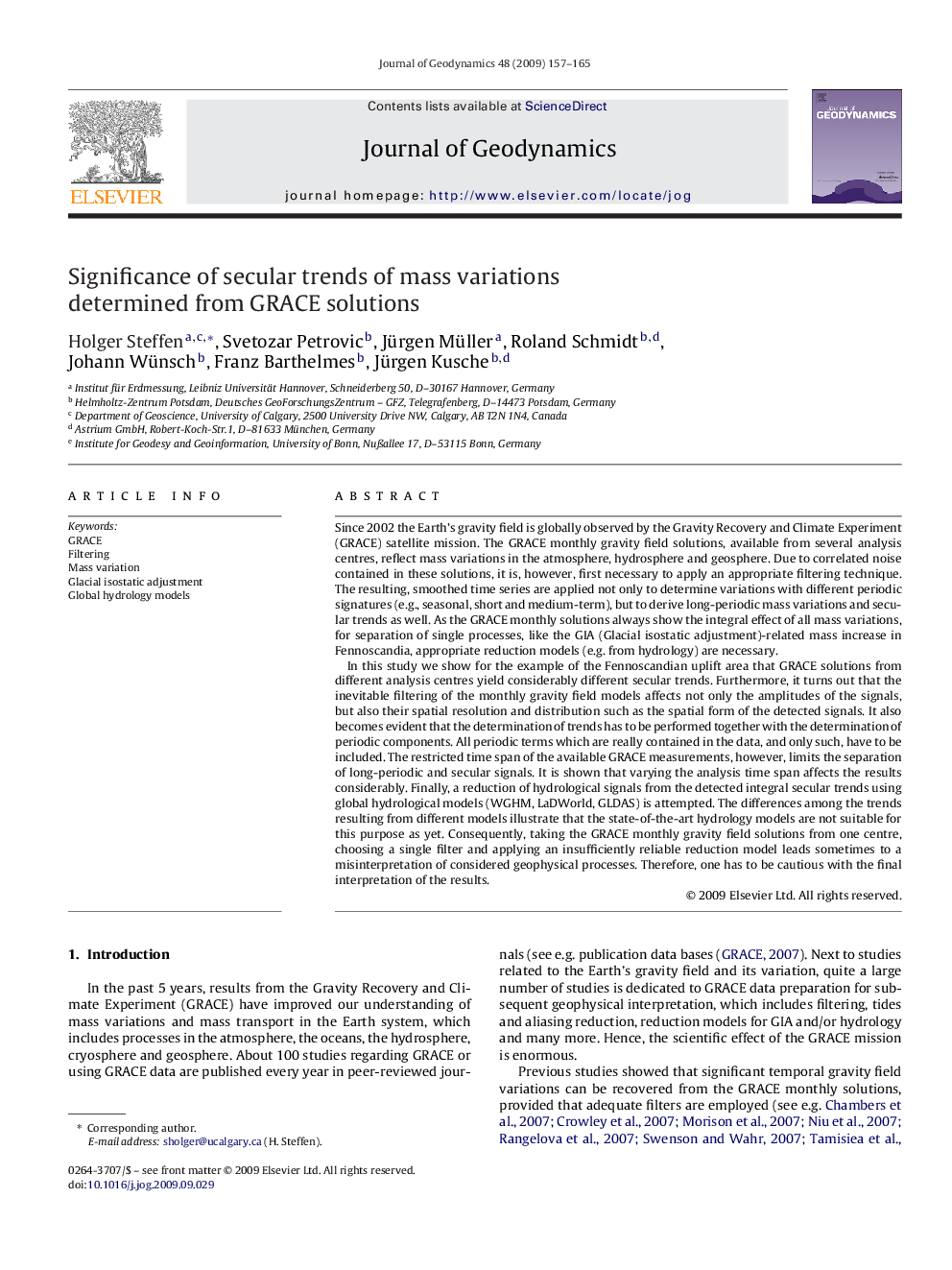| Article ID | Journal | Published Year | Pages | File Type |
|---|---|---|---|---|
| 4688621 | Journal of Geodynamics | 2009 | 9 Pages |
Since 2002 the Earth’s gravity field is globally observed by the Gravity Recovery and Climate Experiment (GRACE) satellite mission. The GRACE monthly gravity field solutions, available from several analysis centres, reflect mass variations in the atmosphere, hydrosphere and geosphere. Due to correlated noise contained in these solutions, it is, however, first necessary to apply an appropriate filtering technique. The resulting, smoothed time series are applied not only to determine variations with different periodic signatures (e.g., seasonal, short and medium-term), but to derive long-periodic mass variations and secular trends as well. As the GRACE monthly solutions always show the integral effect of all mass variations, for separation of single processes, like the GIA (Glacial isostatic adjustment)-related mass increase in Fennoscandia, appropriate reduction models (e.g. from hydrology) are necessary.In this study we show for the example of the Fennoscandian uplift area that GRACE solutions from different analysis centres yield considerably different secular trends. Furthermore, it turns out that the inevitable filtering of the monthly gravity field models affects not only the amplitudes of the signals, but also their spatial resolution and distribution such as the spatial form of the detected signals. It also becomes evident that the determination of trends has to be performed together with the determination of periodic components. All periodic terms which are really contained in the data, and only such, have to be included. The restricted time span of the available GRACE measurements, however, limits the separation of long-periodic and secular signals. It is shown that varying the analysis time span affects the results considerably. Finally, a reduction of hydrological signals from the detected integral secular trends using global hydrological models (WGHM, LaDWorld, GLDAS) is attempted. The differences among the trends resulting from different models illustrate that the state-of-the-art hydrology models are not suitable for this purpose as yet. Consequently, taking the GRACE monthly gravity field solutions from one centre, choosing a single filter and applying an insufficiently reliable reduction model leads sometimes to a misinterpretation of considered geophysical processes. Therefore, one has to be cautious with the final interpretation of the results.
